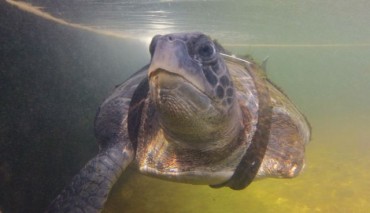 Can computer generated Bengal tigers help save the 1850 real ones which remain in the wild?
Can computer generated Bengal tigers help save the 1850 real ones which remain in the wild?
The Life of Pi is a novel by Yann Martel, first published in 2001. It told the story of a boy whose family is shipwrecked while moving their private zoo’s animals from French India to Canada. It was thought to be unfilmable. In Ang Lee’s film adaptation, Piscine Molitor (aka Pi) , played by the delightful young Suraj Sharma, is the only human survivor of the shipwreck. No, I haven’t given the story away. The Life of Pi is open in Turkey, Jordan and other cinemas throughout the Mideast. It faces stiff competition from Peter Jackson’s The Hobbit and Les Misérables, but if you’re looking for a beautiful movie with a thought-provoking environmental connection, consider the Life of Pi.
“We’re dying Richard Parker. I’m sorry.” A tearful Pi says this to a surviving castaway aboard his lifeboat. His companion is a Bengal tiger who was dubbed Richard Parker after a name mix up between a tiger its hunter. Like the novel it was based on, The Life of Pi takes us on a philosophical adventure. It explores the nature of reality, truth, religion and storytelling. Like the book it also contains some fascinating ecological metaphors. We can imagine his lifeboat as Noah’s ark or as a microcosm of our world. As a boy, Pi studied many religions and several of these hold that humans are stewards over our planet.
From Genesis 1:26:
Then God said, “Let us make mankind in our image, to be like us. Let them be masters over the fish in the ocean, the birds that fly, the livestock, everything that crawls on the earth, and over the earth itself!
This is exactly what Pi must do if he is to survive. But as an ethical vegetarian who shares a small boat with a top predator, he finds that this is not a simple task. His strategy mirrors that of human civilization, at first he distances himself from the beast. He builds a ramshackle raft and ties a long rope between it and the more seaworthy boat occupied by the tiger, keeping nature at a distance.
Later Pi makes fun of survival guides by inventing his own which details, “What to do if you are a castaway alone on a lifeboat with an adult Bengal tiger. Step one…” He considers methods of taming the beast much as a circus trainer might. I don’t want to give too much away but the complex symbiotic relationship between man and nature is a recurring theme in both movie and book. Sustainability is expressed most clearly when it is a matter of survival.
There are some disturbing scenes for animal lovers and children. Most involve animals preying on other animals. Pi’s father uses a goat to teach his son a lesson about the true predator behind the seemingly soulful eyes of a tiger. Much of the blood and gore is off-screen and suggested rather than simulated. This makes The Life of Pi much more watchable than so many films whose directors believe special effects should appeal to the prurient interests of our violent civilization.
Ang Lee seemed to focus much of his special effects budget on creating realistic computer generated (CGI) animal to spare real animals from the horrors of Hollywood. It is mysterious why The Life of Pi didn’t get an official “No animals were harmed” label. Was it that Ang Lee did not feel the need to hire animal rights watchdogs for simulated animals? At least this film doesn’t seem to have triggered the animal cruelty controversy of The Hobbit whose filming location was associated with up to 27 animals deaths. The Life of Pi is proof that it is possible to make a movie about a Bengal tiger without disturbing any of the 1850 remaining in the world.
Ang Lee couldn’t film everything in Yann Martel’s novel but David Magee well-crafted screenplay didn’t leave any gaping holes. Nor did it sprawl out and dilute the book as The Hobbit seems to have. This movie did add something that only the film-making art form can provide. The Life of Pi is a visually beautiful movie that requires neither 3D nor 48 FPS high frame rate (HFR) to enjoy.
This movie’s CGI has finally bridged the so-called uncanny valley which made the simulated life in Jurassic park and Polar Express disturbingly surreal. If real animals were used in this movie it isn’t possible to discern them from their simulations. There are scenes where artistic license was used and the artist chose beauty, poetry and magic over absolute realism or ‘truth’ but if you’ve read the book you’ll understand that that too is what it’s all about.
I have seen pods of dolphins but I wouldn’t have believed they ever reached the numbers portrayed here until I saw the disturbing true-life documentary, The Cove. I have seen luminescent undersea life and can’t prove that they wouldn’t appear as bright in the middle of the lonesome Pacific. Would gazing into the eye of a starving tiger reveal the mysteries of the world’s religions? I don’t think any of us can say.
Pi promises that his story will make you believe in God. I can’t promise that, but it may reveal the truth that even in this world of science and technology, satellite navigation, and 24-hour digital news, we don’t know everything. Admitting that is a good start. And if you haven’t already read the book, you should. The movie Life of Pi was excellent but the book was even better.
Image of Bengal tiger via shutterstock




在此之后,他也和伏地魔迎来了最后的对决
The human population keeps growing, so the tigers are doomed.